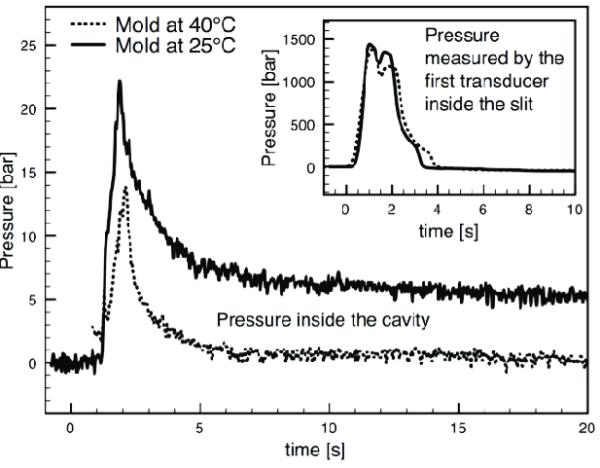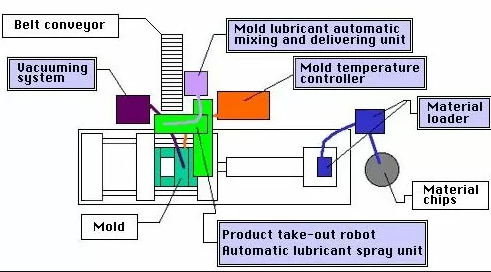Mold temperature in injection molding refers to the surface temperature of the mold cavity in contact with the plastic parts during the process. The injection mold temperature has an obvious influence on the appearance, dimensional accuracy, and properties of the plastic molded parts. It also influences the production, subsequent processing, and final application of products. For the most part, mold temperature is one of the most fundamental control factors in the injection molding process, and it is also the most important factor to consider when designing a mold. The recommended mold temperature is 130℃ to 150℃.

In our usual production process, when some products are relatively small and the requirements are not very high, it does not seem to have much effect if no cooling water is connected. For example, the plastic injection mold is cracked, and the cracked place happens to have a waterway through it. There is really no way to repair it, and it can only be produced without water. Some may not need to increase the cooling time, and some need to increase the cooling time, resulting in the entire production. The cycle becomes longer and the production efficiency becomes lower. However, in the case of very high product requirements of plastic injection mold, don’t say to receive water, that is, after receiving water, the fluctuation of water temperature of injection molding still plays a vital role in the impact of the injection molded product.
High mold temperature has the following advantages:1.Conducive to stable dimensions Since the mold temperature is constantly controlled, the injection-molded product shrinks evenly, and the relative product size is easier to control, which is beneficial to improve the dimensional accuracy. 2.Facilitates the filling of the cavity For plastics with poor fluidity and high viscosity, increasing the mold temperature can improve its filling performance and save production cycle time. The fast filling can greatly improve the product’s flow marks, bonding lines, and other bad conditions.

Plastic components will stretch and deform owing to insufficient cooling if the mold cooling system is designed in an inappropriate manner or if the mold temperature management is performed incorrectly. For the purpose of controlling mold temperature, the temperature difference between male and female molds, mold core and mold wall, mold wall and insert, and mold core and insert shall be determined according to the structural characteristics of products, so as to offset the orientation shrinkage difference and avoid the warpage and deformation of plastic parts according to the orientation law by controlling the different cooling shrinkage speed of each part of molding and drawing the plastic parts to the mold wall and insert.
Original Source: https://www.dml-mould.com/news/how-does-mold-temperature-affect-molded-parts%ef%bc%9f
Media Contact
Company Name: DML Plastic Mould Co., Ltd.
Email: Send Email
Phone: +86 0769- 81718606
Address:No. 36 of Houjie Road ,Hojie Town,Dong GuanCity,Guang Dong Province
Country: China
Website: https://www.dml-mould.com/
